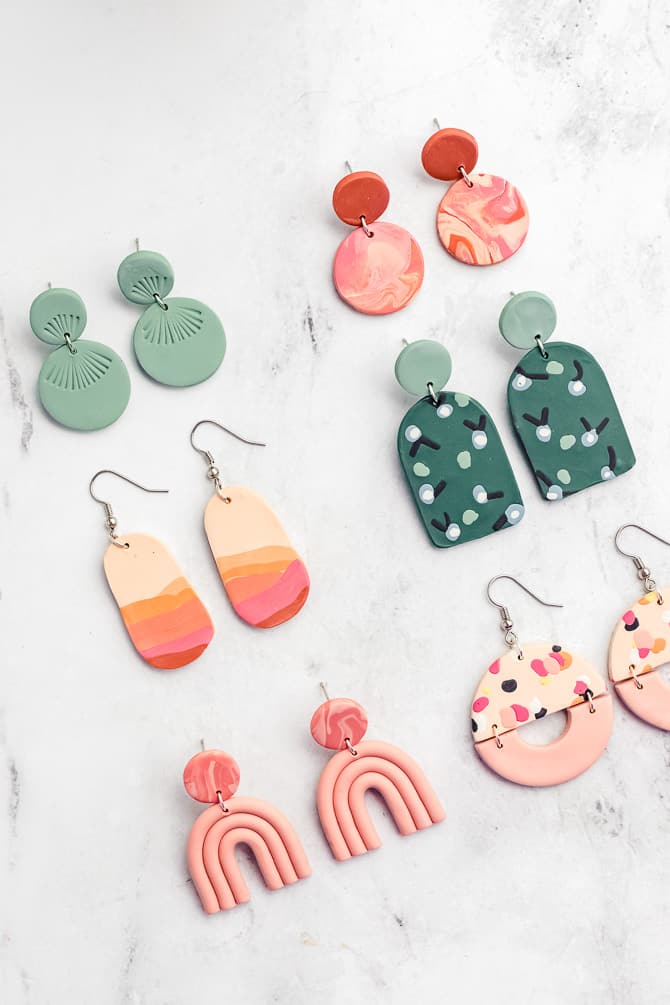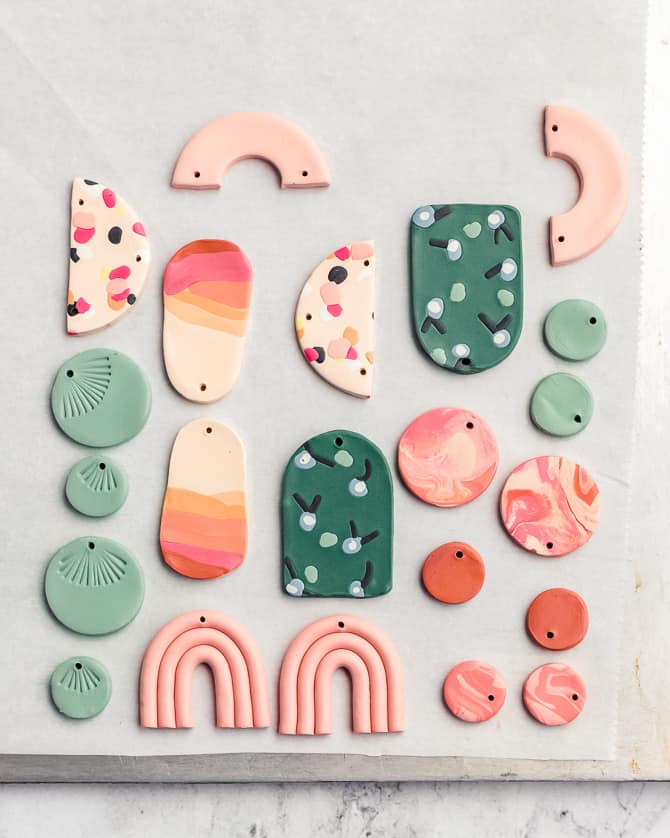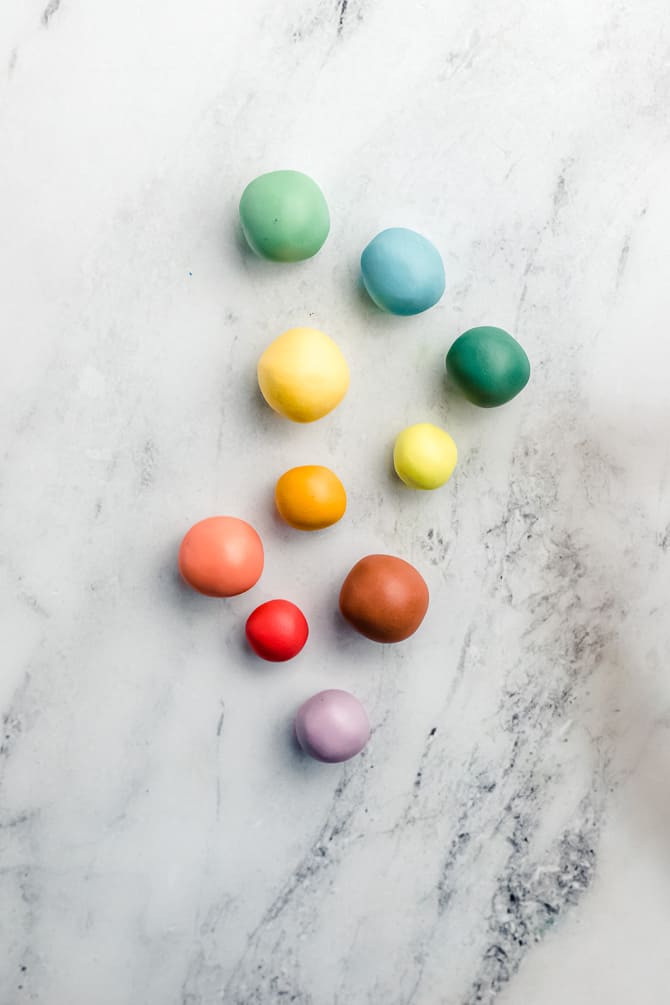Once you’re new to polymer clay, you possibly can be questioning learn to bake it for the best outcomes. On this weblog publish, we’ll prepare you the perfect resolution to bake polymer clay. Then, we’ll offer you some recommendations and strategies so that your initiatives find yourself wanting good. We’ll moreover reply some incessantly requested questions on baking polymer clay. Be taught on to check further.

One of the simplest ways to Bake Polymer Clay
Baking polymer clay in an oven should not be as foolproof as a result of it sounds. The suitable temperature, the right amount of time – all these particulars matter when baking polymer clay.
Once you’ve purchased questions on the best strategy to bake polymer clay, you’re in the perfect place. On this step-by-step tutorial, I’ll stroll you via every factor of learn to bake polymer clay for wonderful outcomes every time.
I’ll share my recommendations and strategies to ensure that your polymer clay creations come out wonderful every time! And, I’ve included detailed instructions on what temperature and the way in which prolonged to bake all kinds of polymer clay initiatives, along with clay earrings.
The Biggest Technique to Bake Polymer Clay
Among the best methods to bake polymer clay is to utilize an oven. You could use your frequent dwelling oven – it’s utterly protected. You don’t need to buy a faithful clay oven or kiln.
Once you don’t have an on a regular basis dwelling oven, you must make the most of a toaster oven. In case you want to use a toaster oven, choose a model that will keep a gradual, appropriate temperature — we’ll talk about this further beneath.
Subsequent, gather your provides and devices. You may want a baking sheet, some aluminum foil, a sheet of parchment paper, and an oven thermometer. And, in reality, it’s important to your clay endeavor.
Step 1: Be taught the bundle course to hunt out out what temperature and time your mannequin recommends. Place the oven thermometer onto the center rack of the oven, and preheat your oven to the correct temperature.
Step 2: When the oven has accomplished preheating, check your oven temperature on the oven thermometer. All ovens are utterly totally different, and most shouldn’t 100% appropriate, so it’s a superb suggestion to examine the temperature sooner than baking. Once you uncover your oven is just too scorching or too chilly, modify the temperature. Wait as soon as extra for the oven to preheat.
Step 3: Put collectively your endeavor for baking. Line a flat baking sheet with parchment paper. Fastidiously place your endeavor onto the parchment paper. Cowl the clay with a tented piece of aluminum foil (or cowl it with an upside-down baking pan).
Step 4: Bake your clay on the actually helpful temperature for not lower than the actually helpful time period. Usually, you probably can bake polymer clay at 275F for about half-hour per 1/4 inch of thickness.
That said, on a regular basis consult with the bundle instructions for brand-specific directions. (Listed under are a couple of of my favorite producers of polymer clay.)
#1 Tip: Don’t underbake.
I do know that a number of persons are afraid of baking their initiatives for too prolonged on account of they don’t must burn their clay. Nevertheless, let me reassure you: in case you’re using the correct temperature (verified by an oven thermometer), you acquired’t have any points with burned clay.

Further Recommendations on Baking Polymer Clay
Now that we’ve coated the best strategy to bake polymer clay, let’s talk about a lot of the actual questions people have about baking polymer clay.
Kinds of Ovens
One of the simplest ways to bake polymer clay in an on a regular basis oven
To bake polymer clay in an on a regular basis dwelling oven, adjust to the course outlined above.
In all probability the best points you’ll be able to do to ensure good outcomes is to examine your oven temperature with an oven thermometer. Oven thermometers like this one are low cost and broadly accessible.
It’s advisable to check out your oven temperature on account of most ovens run each too scorching or too chilly. Once you bake at too scorching a temperature, your endeavor may get discolored or burned. Once you bake at too low a temperature, your endeavor will not ever completely treatment.
One of the simplest ways to bake polymer clay in a convection oven
You possibly can too use a convection oven for baking polymer clay. Convection ovens are notably good on account of they’ve a fan inside that circulates the heat and prevents “scorching spots.” That will help your polymer clay endeavor to bake evenly with out discoloring.
The tactic of baking with a convection oven will most likely be just about the an identical as using an strange oven.
- Preheat the oven to 275 ranges Fahrenheit.
- Look at your oven temperature with an oven thermometer, and modify the temperature as wished.
- Line the flat baking sheet with a bit of parchment paper, and place the endeavor on excessive.
- Proper right here, I would generally let you already know to tent the endeavor with a folded piece of aluminum foil – nevertheless this will get blown spherical by the fan. So in its place, use an upside-down baking pan to cowl your endeavor.
One of the simplest ways to bake polymer clay with out an oven
Once you don’t have entry to an oven, you probably can bake polymer clay with a toaster oven.
Baking polymer clay in a toaster oven
Using a toaster oven to bake polymer clay may be trickier than using an on a regular basis oven. Relying in your toaster oven’s dimension, age, and model, it might not keep a relentless, appropriate temperature. Moreover, as a result of smaller dimension, the clay endeavor is also too close to the heating components, leading to scorching.
So, in case you’re using a toaster oven, be additional cautious with the temperature. And, you must undoubtedly cowl your clay objects with foil or an upside-down baking pan.


Can you bake polymer clay in a microwave?
No, do not try and microwave polymer clay. Microwave ovens don’t create the right of heating environment for curing polymer clay. Microwaving your endeavor will solely lead to burned clay and disappointment.
Can you bake polymer clay in an air fryer?
I suppose since an air fryer is, principally, a small convection oven, it may very well be doable to bake polymer clay in an air fryer. That said, you’ll want to do a lot of testing to ensure that your specific model can hold an appropriate, fixed temperature to treatment the clay with out scorching.
Usually, I’d steer clear of it.
Kinds of Baking Surfaces
You’ll bake clay on numerous surfaces, along with foil and paper.
Baking polymer clay on aluminum foil
The one disadvantage with baking clay on aluminum foil is that the shiny flooring of the foil can depart shiny spots on the underside of your endeavor. If this is not a difficulty for you, foil is appropriate to utilize.
Baking polymer clay on parchment paper
In case you want to forestall shiny spots on the underside of your endeavor, put your endeavor on a parchment-lined baking pan.
Biggest Temperature to Bake Polymer Clay
What temperature do you bake polymer clay?
It is necessary to bake your polymer clay initiatives on the actually helpful temperature for not lower than the actually helpful dimension of time for the best outcomes. It’s advisable to bake your endeavor scorching ample and prolonged ample to ensure a complete treatment.
Most frequently, you probably can bake polymer clay at 275F for about half-hour per 1/4 inch of thickness.
That said, on a regular basis check your bundle instructions for basically probably the most appropriate knowledge – since all producers are utterly totally different.
Obligatory: Don’t underbake your clay. Underbaked clay will lead to brittle objects that break merely.
How Prolonged to Bake Polymer Clay
Usually, bake polymer clay for not less than 20 minutes per 1/4 inch of thickness measured on the thickest spot.
That said, some polymer clay artists advocate baking polymer clay for longer than the bundle recommends. As long as the clay stays on the suitable temperature, you probably can bake the clay for as long as you need.
The purpose is to bake the clay prolonged ample and scorching ample to treatment it absolutely.
Can you bake polymer clay higher than as quickly as?
Positive, you probably can bake a bit higher than as quickly as. You’ll bake a bit of clay as many events because it’s good to get a complete treatment.
So, for many who’ve unintentionally underbaked your clay, you probably can bake it as soon as extra.
How are you conscious when polymer clay is completed baking?
The polymer clay will most likely be significantly clean when you first take away it from the oven. It acquired’t attain its closing “hardness” until it’s absolutely cool.
Appropriately baked polymer clay will most likely be significantly versatile after baking. Skinny objects can be succesful to bend and flex – though it is potential you will not be succesful to bend thicker objects.
Nevertheless, in case your endeavor breaks, snaps, shatters, or in some other case crumbles when you try and bend it, the clay should not be appropriately baked.


Polymer Clay Baking Instructions by Mannequin
- Premo Sculpey: Bake at 275 °F (130 °C) for half-hour per 1/4 in (6 mm) thickness.
- Sculpey Souffle: Bake at 275 °F (130 °C) for half-hour per 1/4 in (6 mm) thickness.
- Fimo Expert: Bake at 230 °F (110 °C) for half-hour per 1/4 in (6 mm) thickness.
- Kato Polyclay: Bake at 300 °F (150 °C) for half-hour per 1/4 in (6 mm) thickness.
One of the simplest ways to Bake Explicit Shapes
Baking flat objects is easy ample, nevertheless totally different shapes require utterly totally different preparation.
One of the simplest ways to bake polymer clay rings
Counting on the type of the rings, you may have the ability to bake them flat on a sheet tray. Or, it is potential you will should assist them with an aluminum foil armature to steer clear of slumping.
In case you’re baking a polymer clay piece hooked as much as a metal ring clear, you probably can slide the ring half proper right into a small slot cut back into an upside-down disposable aluminum baking pan.
One of the simplest ways to bake polymer clay beads
You’ll bake beads on a shallow layer of baking soda inside a baking dish.
Or, fold a bit of paper accordion-style, and place the beads inside the valleys of the folds to take care of them from rolling spherical inside the oven.
Once you make a lot of beads, keep in mind investing in a bead rack. The bead rack suspends the bead on a metal bead pin, so that you just don’t get flat spots.
One of the simplest ways to bake polymer clay charms
Counting on the type of the charms, you probably can bake them on a flat flooring, on a bead rack, or nestled proper right into a shallow layer of baking soda.
One of the simplest ways to bake polymer clay onto glass
Once you wrap a sheet of polymer clay spherical a glass container absolutely, it could possibly create a mechanical keep as a result of it bakes.
You’ll add a layer of liquid clay to the glass sooner than wrapping it with the polymer clay for additional keep, nevertheless it’s not strictly essential.
Be careful to relax the glass object slowly to steer clear of cracking.


FAQ and Troubleshooting
Help! My clay is burned.
Polymer clay can burn if uncovered to temperatures above 350 ranges F.
Burned clay isn’t any satisfying. It smells pretty harmful, and sadly, can’t be salvaged. Once you’ve burned your endeavor, flip off the oven and activate the fan (or open the house home windows). Go away the room until the fumes have aired out.
To forestall burning your piece subsequent time, you must undoubtedly check your oven temperature with an oven thermometer. For additional insurance coverage protection, set a timer, so that you just don’t overlook about your endeavor inside the oven.
My clay appears brown or toasted.
Usually polymer clay – notably translucent clay – can discolor if uncovered to extreme temperatures. Listed under are a lot of strategies to protect in the direction of browning:
- Maintain a pizza stone or huge ceramic tile on the underside rack of the oven. The pizza stone acts as a heat sink and helps regulate the oven’s temperature as a result of the heating components cycle on and off.
- Cowl the objects with a sheet of tented aluminum foil or an upside-down baking pan. Or, bake the objects inside an enormous coated roasting pan. The lid protects your objects from getting scorched by the intense heat of the oven’s heating components.
- In case your objects are small, bury them in a layer of baking soda. (This method is nice for beads!)
My clay is brittle after baking.
Clay that is brittle or breaks after baking is form of on a regular basis introduced on by endeavor. In case your objects crumble, crack, or snap after baking – you perhaps didn’t bake them for prolonged ample.
Although underbaked clay appears common, it’d most likely snap when you try and bend it.
Bake the objects as soon as extra on the actually helpful temperature for not lower than the actually helpful time period. For the best outcomes, I like to recommend baking the objects for not less than half-hour per 1/4″ of thickness.
My clay has shiny spots.
Once you bake polymer clay on a shiny flooring, there is also shiny spots on the clay after baking. To forestall this, put a bit of parchment paper between the clay and the shiny baking flooring. The layer of paper should forestall the shiny spots on the underside of the clay.
Further Polymer Clay Tutorials
Once you have the benefit of creating with polymer clay, it is potential you will be excited by these related articles:
Have questions? Be a part of the Fb Group!
We hope this textual content was useful for you! When you may have any further questions, be pleased to affix my Fb Group. We created this group in an effort to share images, ask questions, and help each other out.


What’s Subsequent?
Pin this publish: Save this tutorial to your Pinterest boards as a strategy to come once more to it later.
Go away a comment: We like to hearken to your recommendations. Inform me inside the suggestions beneath!
Share on Instagram or Fb: Everytime you make this endeavor, share it on social media and tag me @sarahmaker_. We prefer to see what you make!
Provides
- polymer clay
- parchment paper
- aluminum foil
Devices
- flat baking sheet
- oven thermometer
Instructions
- Be taught the bundle course to hunt out out what temperature and time your mannequin recommends. Place the oven thermometer onto the center rack of the oven, and preheat your oven to the correct temperature.
- Look at your oven temperature on the oven thermometer. Once you uncover your oven is just too scorching or too chilly, modify the temperature. Wait as soon as extra for the oven to preheat.
- Put collectively your endeavor for baking. Line a flat baking sheet with parchment paper. Fastidiously place your endeavor onto the parchment paper. Cowl the clay with a tented piece of aluminum foil (or cowl it with an upside-down baking pan).
- Bake your clay on the actually helpful temperature for not lower than the actually helpful time period. Usually, you probably can bake polymer clay at 275F for about half-hour per 1/4 inch of thickness.
Obligatory: On a regular basis consult with the bundle instructions for brand-specific directions.


